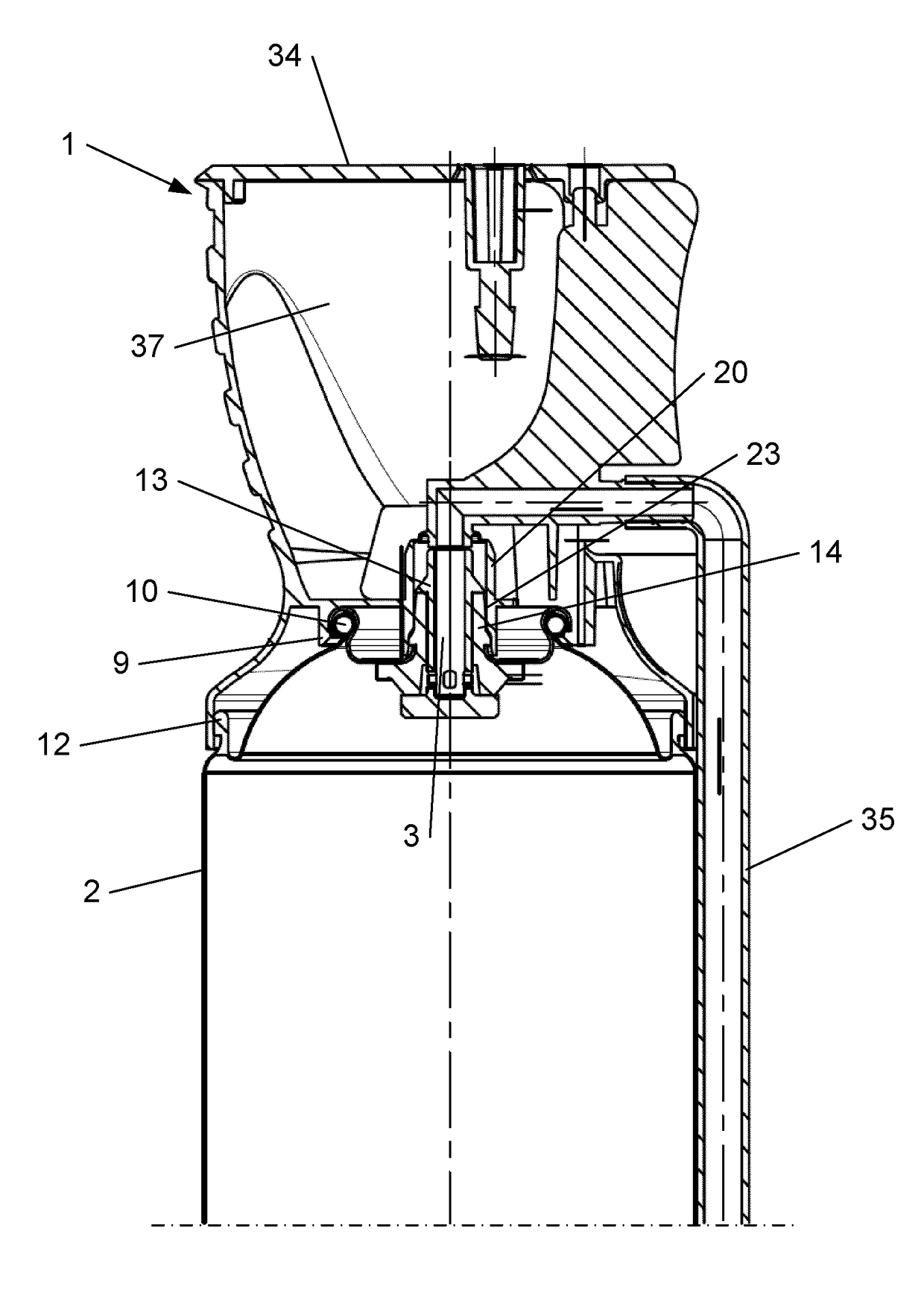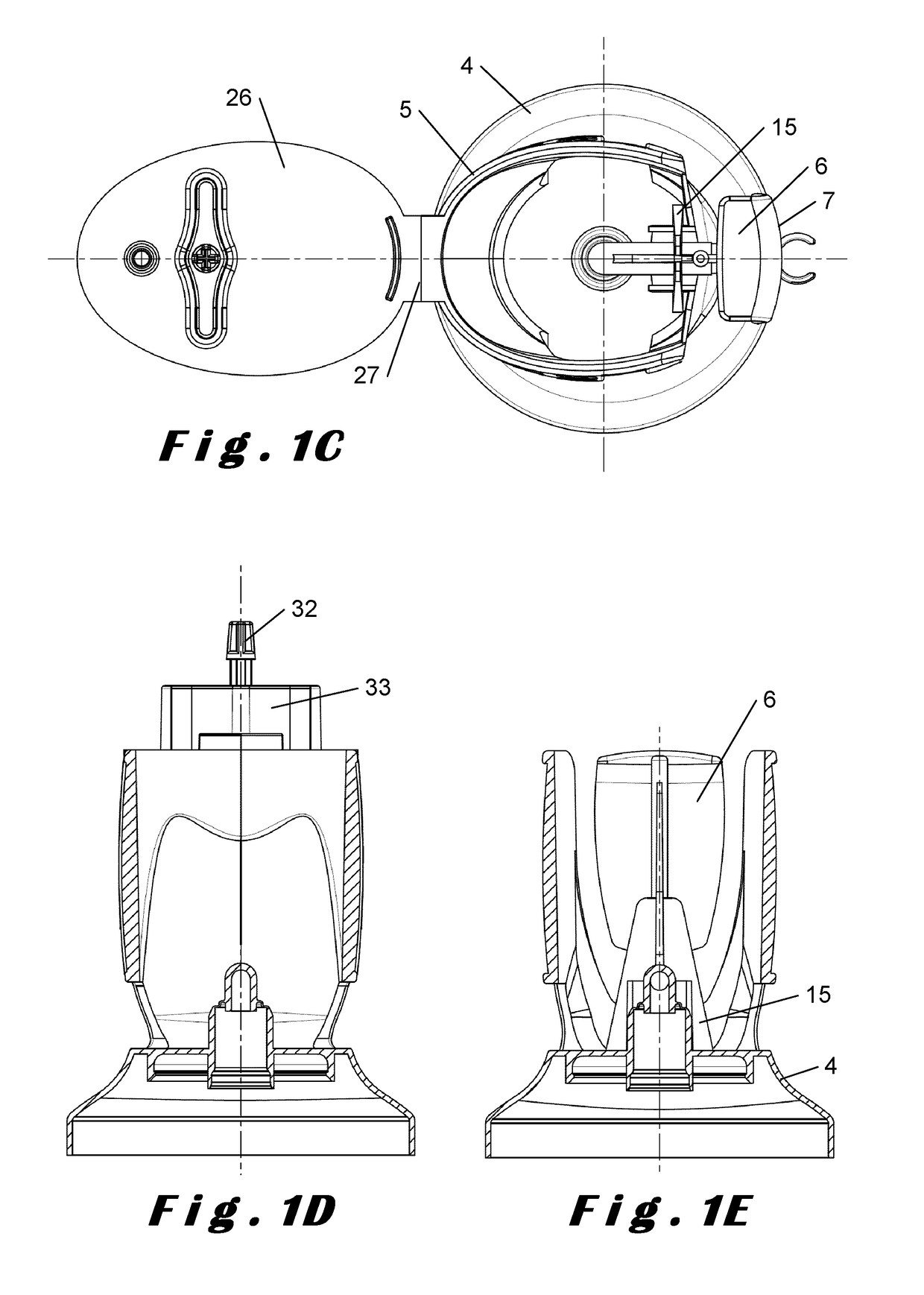Handheld applicator suitable for gun valve containers
a technology for gun valve containers and applicators, which is applied in the field of hand-held applicators suitable for gun valve containers, can solve the problems of attachment release, difficult to predict and control the dosing of compound with such handheld systems, and inaccurate compound dosing, etc., and achieves easy and intuitive use, excellent ergonomics, and elimination of complex and costly assembly steps.
- Summary
- Abstract
- Description
- Claims
- Application Information
AI Technical Summary
Benefits of technology
Problems solved by technology
Method used
Image
Examples
Embodiment Construction
[0034]The containers for compounds under pressure are typically designed as cylinders. The bottom is usually closed off by flanging a concave bottom plate onto the cylinder. The top of the cylinder is typically closed off by flanging on a convex head plate, with therein a central opening through which the container may be filled with its content. This opening is then typically closed off with a valve through which the container content may be released using the pressure which is built up inside the container. This container valve is typically also flanged onto the container head. This valve flange connection is formed by shrinking the container valve onto the container head, thereby typically at the same time closing off the container after it has been filled.
[0035]At room temperature, the pressure inside a filled and ready-to-use container is typically about 5 bar gauge. The containers are typically able to remain intact up to a pressure of 18 bar gauge, and are designed to not bur...
PUM
| Property | Measurement | Unit |
|---|---|---|
| surface area | aaaaa | aaaaa |
| surface area | aaaaa | aaaaa |
| pressure | aaaaa | aaaaa |
Abstract
Description
Claims
Application Information
 Login to View More
Login to View More - R&D
- Intellectual Property
- Life Sciences
- Materials
- Tech Scout
- Unparalleled Data Quality
- Higher Quality Content
- 60% Fewer Hallucinations
Browse by: Latest US Patents, China's latest patents, Technical Efficacy Thesaurus, Application Domain, Technology Topic, Popular Technical Reports.
© 2025 PatSnap. All rights reserved.Legal|Privacy policy|Modern Slavery Act Transparency Statement|Sitemap|About US| Contact US: help@patsnap.com



